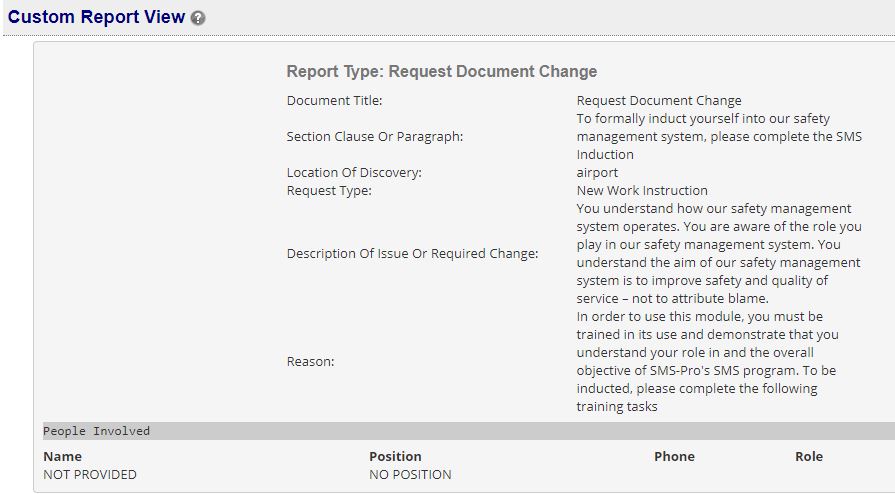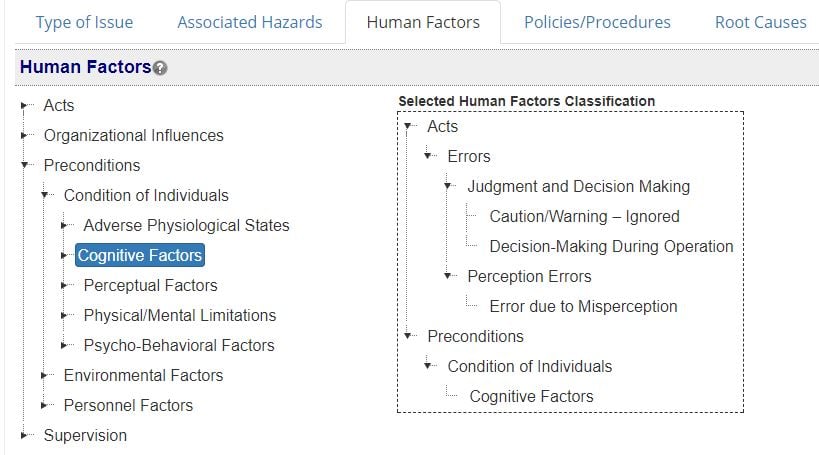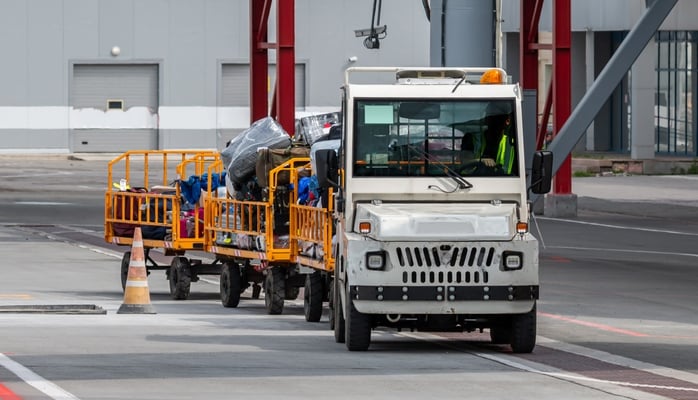Steps for How to Manage Hazard Reports

The 4 I’s of Issue Management are a useful, high-level way of looking at the process and steps for managing hazard reports.
In terms of how to manage hazard reports, these 4 basic steps in the process are:
- Ingest an issue through various hazard reporting methods;
- Investigate the causes of the issue, such as the root causes and Human Factors;
- Identify how to fix the causes of this problem through detection, prevention, and/or correction; and
- Implement changes that fix causes via corrective actions.
In other words, get the data (the reported issue), thoroughly understand the problem and figure out how to fix it, and follow through with implementing the changes. Here are more details on the steps to manage hazard reports when they are submitted to your aviation safety program.
Review Report Details

Good hazard reporting forms make reviewing report details simple. Ideally, you will have a handful of reporting forms that each capture all of the information needed for that type of report. This is useful for several reasons:
- Makes reviewing the report simple, streamlined, and consistent;
- You should rarely have to follow up with the reporter for more information; and
- These reports are easy to data mine.
When reviewing report details, the big concerns are that you answer the following questions:
- What was the order of events that led to this report, i.e. the “narrative;”
- What are the basic facts that are relevant to the issue, such as time of day, people involved, etc.; and
- What is your immediate impression about how severe this problem is?
The first two bullet points are related to data gathering. The last point is important because it will dictate how quickly you act on managing this issue, as there may be more pressing concerns.
Analyze Existing Data to Establish the Hazard Report’s Context
Establishing context is an important step that many safety managers miss. Context is extremely important for understanding:
- Whether the current report is the result of a current trend; and
- Whether the current report has arisen for different reasons than otherwise indicated in the report.
Analyzing existing data involves reviewing recent data, such as from the last 30 or 90 days:
- Safety metrics;
- Classifications;
- Pie charts and line graphs; and
- Lessons learned.
A poignant example of the importance of this would be the following example report: rat in the cockpit. Establishing context for this report could prove important. If you take the report at face value, you might simply move on to the next steps, dealing with the issue at hand. If, however, you review recent data you might notice that 4 other reports have been similarly classified, and they were all reported via aircraft from the same hangar.
Notice the difference? By establishing context, you may uncover an entirely different, more fundamental issue altogether.
Perform Initial Risk Assessment on Issue and Set Target Closure Date
An initial risk assessment should rank the issue based on issue details and analyzed context. This ranking will provide some more guidance on what to do next:
- How quickly should this issue be corrected?
- Does the issue fall within your defined Acceptable Level of Safety (ALoS)?
You will perform your initial risk assessment with a risk matrix. Based on this risk assessment, you will set a target closure date. The more severe the assessment, the sooner the target closure date should be, as more severe issues need to be corrected sooner.
For more information, see How to Review Safety Issues in SMS Programs.
How to Perform Root Cause Analysis

Root cause analysis is an important step in the risk analysis process. The goals of root cause analysis are:
- Understand why the safety event happened;
- Establish precursors to danger; and
- Establish underlying causes for safety issues.
Root cause analysis is usually performed with some kind of tool, such as:
- 5 Whys Analysis; or
- Fishbone Diagrams.
Performing root cause analysis is simply a matter of following the prescribed method of analysis based on which tool you are using to perform the analysis.
Organize Issue With Relevant Classifications

Organizing issues with relevant classifications is a powerful practice for:
- Data mining;
- Establishing trends;
- Reviewing similarly classified issues; and
- Organizing the issue.
You should classify issues based on things like:
- The identified hazard in the current issue;
- The identified root causes in the current issue;
- Relevant Human Factors in the current issue;
- Relevant policies and procedures; and
- Other relevant classifications as you see fit.
For more information, see How to Set Up Classifications in Aviation SMS Implementations.
How to Review Effectiveness of Risk Controls

Another important step in managing safety issues is reviewing the effectiveness of risk controls. Risk control performance is the basis for your risk mitigation and safety efforts, and how you directly control risks.
When managing issues, simply review the risk controls that control:
- Hazard of the current issue;
- Root causes of the current issue; and
- Human Factors relevant to the current issue.
For each risk control, assess whether the control:
- Contributed positively to outcomes; or
- Contributed negatively to outcomes.
If a control contributed negatively, it would behoove you to document this. See How to Monitor Control Measures in Aviation SMS.
Create Corrective Actions to Fix Issue
By now, you should have all of the information you need to know how to correct the issue.
Correcting the issue means using corrective preventative actions to update your SMS back within an ALoS for the given circumstance. These CPAs should be assigned to relevant users who will facilitate the CPAs. Many aviation safety programs also have a practice of assigning relevant department heads or other subject matter experts the task of managing assigned CPAs.
Perform Closing Risk Assessment
Once all CPAs have been completed, you need to perform a final risk assessment on the issue to ensure that it is within an ALoS. Closing risk assessments should take into account all work and all changes you have made to the SMS.
Beyond this, you perform the risk assessment in the same manner as the initial assessment, using a risk matrix. If everything looks in line, you can close the issue.
Final Steps for Issue Management
Final steps to take after closing the issue include:
- (If Applicable) Update SMS design documentation to account for any changes you made to the SMS;
- Review the issue once or on a recurring basis.
Serious issues should probably be reviewed on an ongoing basis. Less severe issues may only be reviewed once or twice.
Last updated December 2024.






